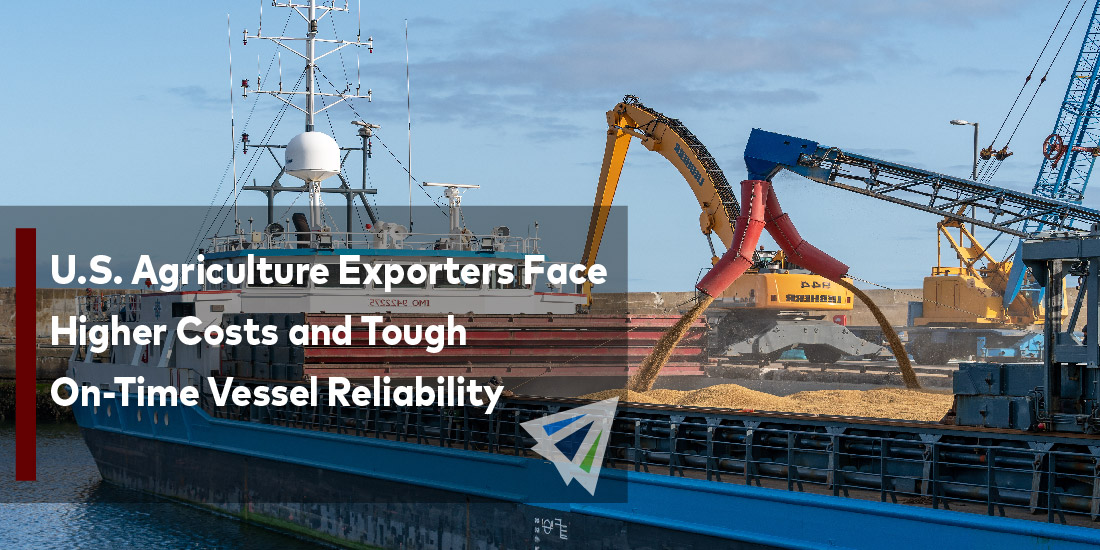U.S. Agriculture Exporters Face Higher Costs and Tough On-Time Vessel Reliability
Shipping conditions for ag exporters have been rough in recent months, and it looks like things aren’t improving. If anything, they’re even getting a bit worse. Vessel availability is hard to come by and increasing delays are putting undue pressure on farmers, grocers, and others in related industries as they struggle to get cargo to its destination with any degree of efficiency.
U.S. ag exporters are losing in their competition against other global producers as rising shipping costs, due to the imbalance of supply and demand, are putting their pricing in a disadvantageous situation. Containerized ag exports had fallen over 10% in all of 2021, and fell an additional 5.4% in the first half of this year.
While the Ocean Shipping Reform Act of 2022 (OSRA-22) increased regulatory scrutiny on carriers, ag exporters are reporting that the law reform sections that cover detention and demurrage billing haven’t been implemented yet, so shippers continue to be at the mercy of carrier booking practices that either haven’t yet or haven’t at all been addressed by OSRA-22.
These fees make it incredibly risky and unprofitable for shippers. Typically speaking, ocean carriers will give shippers 2 free days for reefer containers to sit before they incur per diem charges, which can be as steep as $500 per day per container. This is problematic, as drayage services have been barred from using certain chassis for their containers, and vessel arrival and container availability dates are in a constant state of flux. All this added together often makes it near impossible for shippers to retrieve their containers before they begin incurring per diem charges, often for several days in a row.
Lastly, cold storage facilities and warehouses near the Southern Californian ports are completely packed to the brim, making the logistics of exporting and importing ag products incredibly difficult and risky. Due to staffing shortages and overall market conditions, many of these warehouses close at 2:00pm, increasing the difficulty of reefer cargo getting picked up and hauled by a truck inland to a storage facility all-the-more difficult.
The primary frustration and cause of problems lies in the lack of schedule integrity regarding ocean shipments. The air shipping industry has done an incredible job of adapting with the times and integrating technology in their tracking, reporting, and invoicing process that ensures schedule departures and arrivals are reliable, and invoices are correct. However, the ocean shipping industry is incredibly far behind on its practices, which leaves tons of room for misinterpretation, delays, and increased fees and costs to the shipper.
Looking Ahead
The most important thing that shippers can do right now is to plan ahead and stay informed on all necessary notifications related to their shipments departure and arrival. This is often difficult, as shippers are frequently left either in the dark by their forwarders or drowning in a sea of mostly-useless notifications (causing them to miss updates on the most important ones).
This is why we built GEMCA – a tool that allows shippers to select the five most important milestones related to a shipment that they want to receive notifications for without getting buried by useless information and updates along the way.
If you have any questions about ag exports or other ocean freight, or want to learn more about how GEMCA is currently protecting shippers from the issues being experienced nationwide, please don’t hesitate to reach out to one of our team members! We would love to help you and your team in any way we can!
